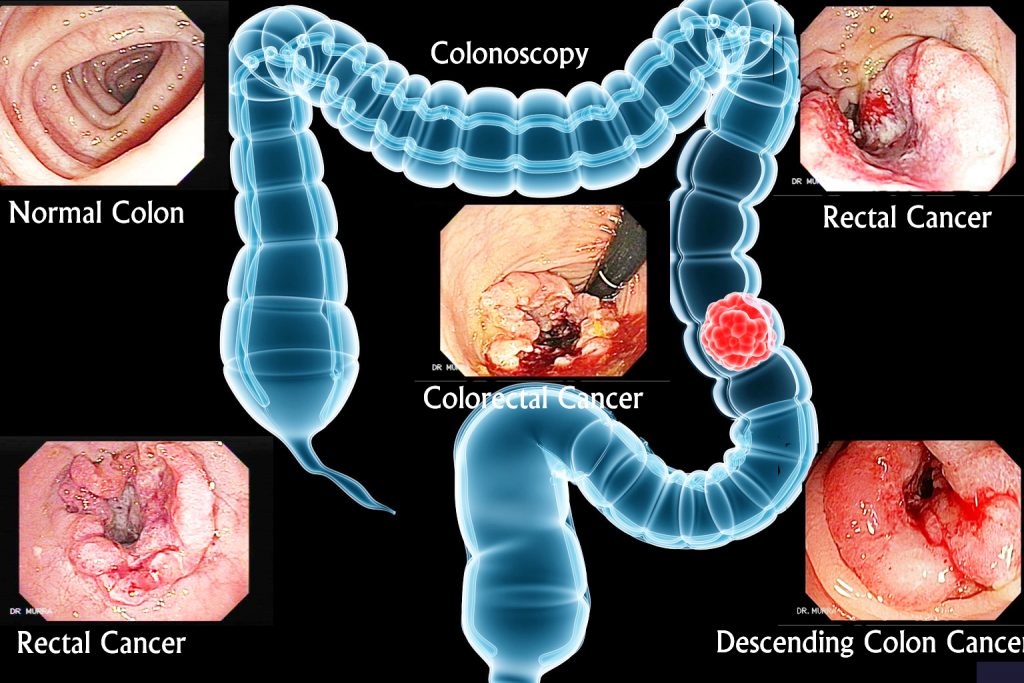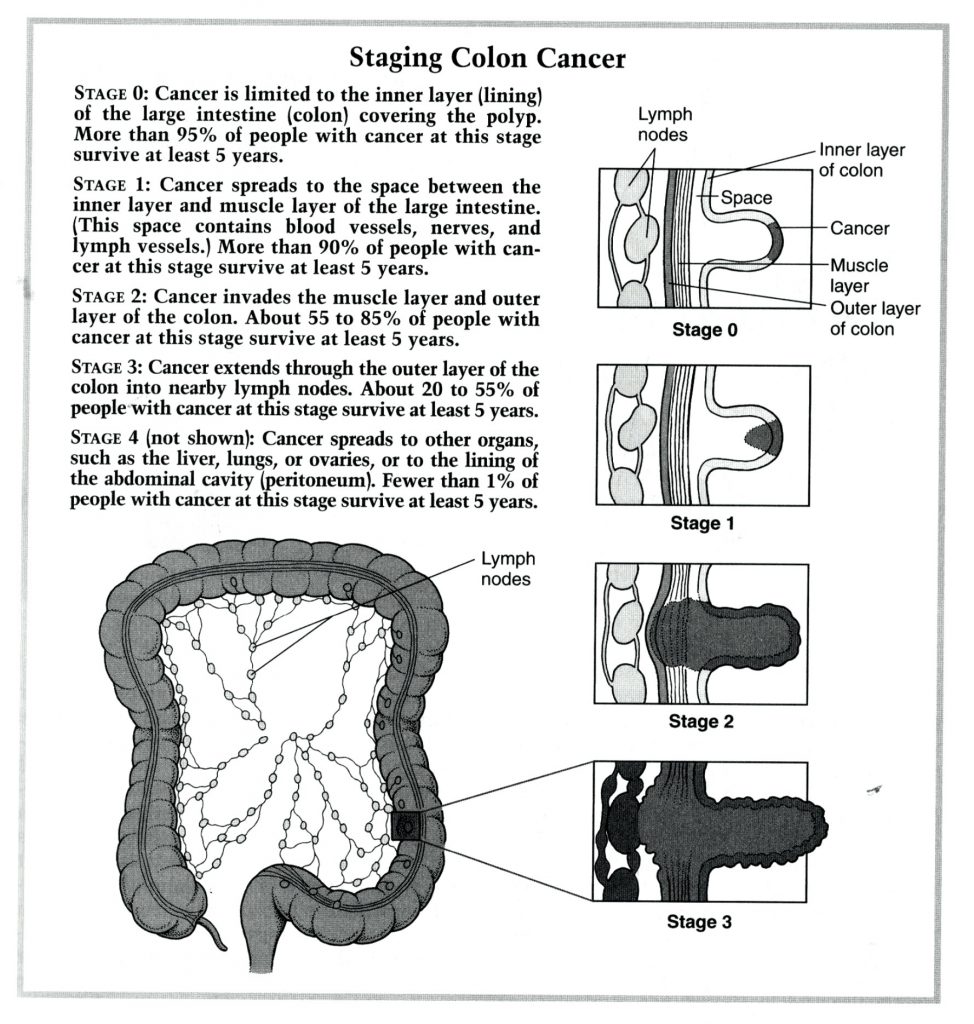Wilfredo (not his real name) grew up in a small town in Bansalan, Davao del Sur. He used to eat vegetables, which his parents brought from their farm in Balutakay. Being the eldest son of five siblings, he was groomed as the one who will bring them out from poverty.
He was an intelligent student, so it was not surprising that he was given a scholarship to study in one of the best universities in Davao. He took accounting as his course. Since he was already far from his family, he started eating canned goods.
Going out with his new-found friends, Wilfredo also started smoking and drinking alcoholic beverages. There were times that he would go home at his boarding house drank. His landlady complained because he smoked even at his room.

He did graduate and was able to be employed in a bank, where he met his future wife. They had already two children when he learned that his first-degree cousin was diagnosed of having a colon cancer.
He had forgotten about his cousin when one night he observed dark stools after relieving himself. There were moments also that he had this feeling of having a bowel movement but is not relieved. He was also losing weight.
His wife, Mary Ann, observed that Wilfredo often went home feeling so tired. So, she decided to bring him to a hospital. “Let’s just have a physical check-up,” she suggested. At first, her husband turned down the idea. But she persisted and so he relented finally.
After a thorough check-up, the doctor found out something. He never told them what he discovered but instead gave an address of another physician. “Go and see him,” he said. “He may be able to help you.”
They did go. To make the long story short, Wilfredo was diagnosed of having a colon cancer. “That cannot be,” he cried out loud.
Colon cancer is one of the cancers that strikes Filipinos. Among those who died of colon cancer include president Corazon C. Aquino, actor Charlie Davao, and singers Susan Fuentes and Roel Cortez. (Hollywood actresses Audrey Hepburn and Farrah Fawcett and British singer Robin Gibb also died of the dreaded disease.)

Colon cancer goes together with cancer of the rectum and is called colorectal cancer (CRC). “CRC is the third most common cancer among Filipinos after breast and lung cancers,” says Dr. Jun R. Ruiz, a Diplomate of the American Board of Internal Medicine in Gastroenterology and a consultant at The Medical City.
Like most cancers, CRC start as abnormal growths in the lining of the colon and rectum called polyps. “These polyps grow slowly and it can take around 10 years for some polyps to develop into cancer,” Dr. Ruiz explains, adding that not all polyps progress to cancer.
“Among cancers, colon cancer stands out as a disease that can be largely prevented, but few people believe it will happen to them,” Dr. Ruiz points out, noting that if discovered early, colon cancer is preventable and treatable. “If it is early stage and localized within the colon, the cure is 100 percent,” he says.
“Colon cancer is more common among women; rectal cancer is more common among men,” says The Merck Manual of Medical Information. “About 5% of the people with colon or rectal cancer have cancer in two or more sites in the colon and rectum that do not appear to simply be spread from one site to another.”
No one knows why a person develops CRC. But the factors that increase the risk for cancer in the colon and rectum, according to Dr. Ruiz, are as follows: age greater than 50; personal history of CRC or advanced polyps; family history of CRC; and pre-existing diseases involving long-term inflammations of the colon.
“Age is the most common risk factor for this cancer, as 90% of these cancers occur after the age of 50,” Dr. Ruiz says. “A family history of a first-degree relative with CRC increases the risk two to three-fold. The risk is especially higher when the relatives’ cancer occurred before the age of 60, or when two relatives have CRC.”
According to Dr. Ruiz, there are also lifestyle factors that likely contribute to the formation of cancer in the colon and rectum. He cites the following: cigarette smoking, alcohol consumption, obesity, and a diet high in the consumption of saturated far and red meat and low in fiber.
“Living a healthy lifestyle by avoiding smoking, not consuming excessive alcohol, exercising regularly, and eating the right food is already a good idea as it lowers your risk for emphysema, cirrhosis of the liver, metabolic syndrome, diabetes, and heart disease,” Dr. Ruiz says. “In addition, all these measures can lower your risk for cancer in the colon and rectum.”
The Johns Hopkins Colon Cancer Center in Baltimore, Maryland says the following symptoms could indicate colon cancer: change in bowel habits such as diarrhea, constipation, or narrowing of the stool that lasts for more than a few days; feeling that you need to have a bowel movement that is not relieved by doing so; rectal bleeding or blood in the stool; cramping or steady abdominal (stomach area) pain; decreased appetite; weakness and fatigue; and jaundice (yellow-green discoloration of the skin and white part of the eyes).
Other conditions such as infections, hemorrhoids, and inflammatory bowel disease can also cause these symptoms. “But it is important to talk to the doctor since finding CRC early makes successful treatment more likely,” the US colon cancer center states.
An ounce of prevention is better than a pound of cure, so goes a saying. Since it takes times for polyps to develop into cancer, it is advisable that people who have the risk of developing the disease to undergo screening.
The two main accepted methods of CRC screening in average-risk individuals recommended by the various medical societies are colonoscopy every 10 years and fecal immunochemical test (FIT) every year.
“Colonoscopy is regarded as the gold standard for CRC screening because of its ability for diagnose and potentially remove early precancerous lesions,” Dr. Ruiz explains. “However, it is an invasive test, which requires procedural sedation and has potential to cause harm.”

FIT is also a good screening method. “The FIT detects only human globin (protein constituent of human red blood) and is specific for bleeding in the colon,” Dr. Ruiz states. “Persons who have a positive FIT are 12 to 40 times more likely to have cancer than those with a negative test. The test is repeated every year if the initial test is negative. If the test is positive, a colonoscopy is needed to rule out the presence of cancer.”
As a gastroenterologist who advocates CRC screening, Dr. Ruiz recommends a screening colonoscopy in persons between 50 to 75 years of age who are healthy and in whom the complications are low. “If the patient does not want to start with a colonoscopy, I suggest starting with FIT,” he said. “After a discussion with his physician, the patient can choose his preferred screening test.”
No one should die of colon cancer but still people do. “Colon cancer is most likely to be cured if it is removed early, before it spread,” the Merck manual claims. “Cancers that have grown deeply or through the wall of the colon have often spread, even if metastases (spread) cannot be detected.”






